For thousands of years, intrepid adventurers have scoured the globe for mythical artifacts notable for granting powers and knowledge. The quest for one such artifact, the Grail, has intrigued and entertained us, gaining popularity through the famed “Indiana Jones” franchise. We can’t seem to get enough of this kind of stuff. It has even spilled over into the world of radiology.
Hundreds of thousands of beaten down, burned out and irritated radiologists wonder when their quest will end. In what epoch will common sense prevail such that differing applications from multiple vendors will function together? When can we, the radiologists, have a single worklist containing all of our cases so we can read with a single microphone without being slowed down?
There are many who have climbed the figurative mountain only to fall off the cliff. The solutions often are akin to a donkey cart pulling a wagon in a world of Tesla® sedans. How come we have such problems with something that seems so simple? The more enlightened individuals understand that different boulders have blocked the path and the obstacles keep getting bigger each year.
The greatest obstacle to the single, unified worklist is ransomware, a type of malicious software which encrypts a victim’s data, making it unreadable unless a usually large ransom is paid. You ask, “How can this be? Ransomware doesn’t even make up a dictation system.” In actuality, many hospitals around the world have had attackers upload ransomware onto their network, resolving the issue either by performing an infrastructure recovery through a backup – a stressful and lengthy process – or being coerced to pay large sums of money. It is not a question of if but when a ransomware attack occurs, as even global healthcare technology leaders such as Nuance® and Garmin® have fallen prey. The bottom line: hospitals are not in the habit of providing backend or HL7 access in order to maintain tight infrastructure security.
Nuance® is the world’s leader in radiology dictation with some estimates nearing 75% of the U.S. healthcare market. However, it can also be said they have an astounding 75% of the most irritated customers as their products prevent multiple instances to run simultaneously. In explanation, if more than one hospital is using the PowerScribe® 360 platform, radiologists cannot run their separate software on the same machine due to software conflicts. This is another hurdle on the quest to capture the Grail. The solution according to Nuance®? Log out and log in to each dictation instance each time you switch; an inefficient solution which requires more work on the radiologists’ part. This is the equivalent of turning your Tesla® sedan back into the donkey cart. Nuance® is not the only purveyor of this type of solution – most PACS vendors don’t allow multiple versions of their software to run on one machine either.
With all of these obstacles, it seems sensible to abandon our quest for the Grail of multiple PACS and dictation interoperability in favor of trying to finish the day’s work. However, a group of valiant adventures have stayed steadfast on the quest and have found a solution which virtually paves the road for us.
Dextro Imaging Solutions LLC has developed a revolutionary product which allows a single worklist to drive multiple PACS on a single workstation using only one set of monitors, one mouse and one microphone. This seemingly mythical solution is called the Grail – not the Grail but the next best thing for radiologists.
The Grail grants powers such as the ability to instantaneously maneuver from case to case, PACS to PACS and PowerScribe® 360 version to version. Its mythic qualities only increase by the fact that it does not require HL7 access. Clunky logging in and logging out procedures will become historical and the absence of sputtering virtual machines means the absence of FDA rule violations on display calibration and increased radiologist efficiency. Jump into the latest technology, improving your efficiency while reducing costs.
Dextro Imaging Solutions is a privately held medical device company, founded in 2020 by a group of industry experts to tackle some of the most challenging industry problems from inadequate hardware to disparate workflows to lack of PACS interoperability. Over the past 10 years Dextro’s leadership has worked to develop, test and supply radiologists with common sense solutions that simply work. We brought hardware and software engineers together with medical experts to design and develop some of the most revolutionary solutions in the market today. From our portable PACS reading stations to our highly intuitive software platforms we are at the cusp of imaging technology. Always willing to take on the challenges the industry has chosen to ignore.
Learn more at dextroimaging.com.

Recent Comments